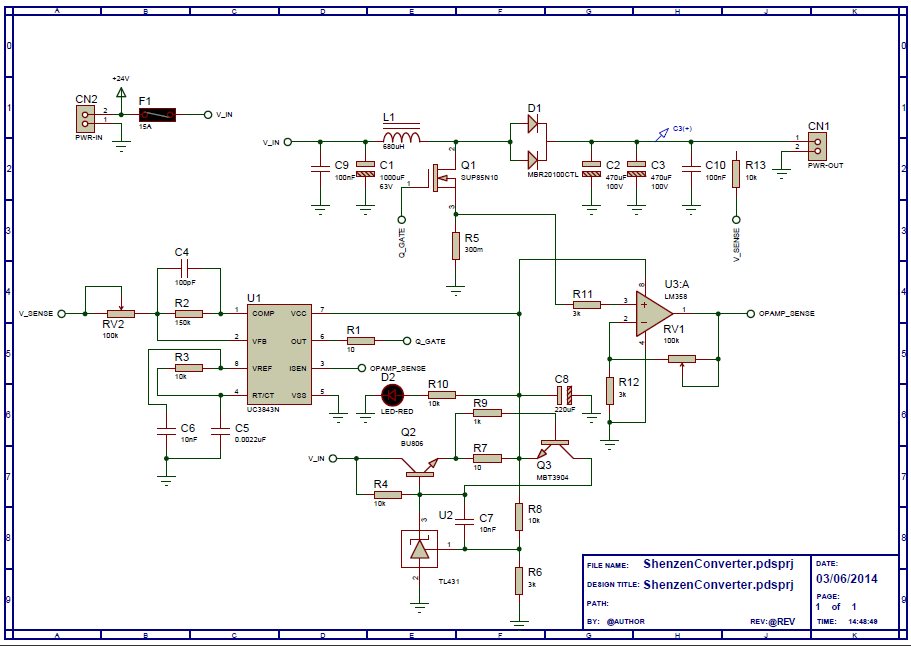Other Parts Discussed in Thread: LM358
Hi,
I found a 600W Boost converter online. I plan on implementing CC-CV scheme on it to convert it to a Li-ion charger.
The converter uses UC3843 to generate control signals for the boost FET. I'm attaching a schematic I found of the circuit its chinese make, so pardon the mistakes)
The converter has two controls - Voltage adjustment and current limiting. The circuit uses LM358. One opamp of 358, U3:A, takes in inductorCurrent sense voltage and generates control signal to limit the inductor current. This signal is sent to ISense pin of 3843. RV1 helps in adjusting the limiting current. Other opamp of 358 is unused. RV2 adjusts the output voltage. A resistor divider is used at the output to sense the output voltage. This signal is sent to Vfb pin of 3843.
So this converter has CV and Current limiting provision. To implement CC functionality, I plan on putting a sense resistor on the output line (low side sensing). The outputCurrent sense voltage will be sent to the 2nd opamp of 358. The amplified signal will be sent to Vfb to control the output such that output current remains constant. Now, there are 2 control signal generation circuits for 3843 (CC and CV). To switch between the two, I'll be using some sort of switch which will be controlled by microcontroller.
My questions are -
Q1. Will this implementation of CC-CV charging work?
Q2. Vfb pin requires 2.5V to operate. What does this mean? How does 3843 regulate the output voltage?
Q3. Is this correct ? -" Whenever voltage at Isense exceeds 1v, current limiting circuitry kicks in, the duty cycle of FET is reduced to decrease the output voltage and hence the current."


